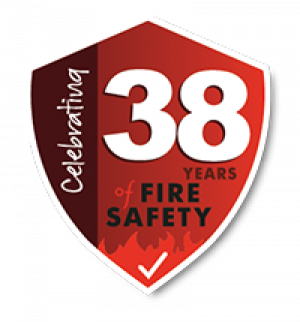The Difference Between Fire Hazard And Fire Risk
21st Dec 2016

As in many specialised areas, there is a lot of jargon in the fire safety world. Terms get used that you – as a business owner – might not be familiar with, or they may be used in a different context.
Two of the most common terms that you will come across in fire safety assessments, forms and regulations are ‘hazard’ and ‘risk’.
You may have heard people use terms like "fire risk" and "fire hazard" interchangeably, but there is actually a very big difference between the two and it’s important that you know which is which, if you’re going to assess them correctly.
What is a Fire Hazard?
A fire safety hazard is something that could give rise to a fire or smoke.
For example, this could be a room full of electronics or badly managed combustible or flammable materials.
What is a Fire Risk?
Fire risk is the estimation of the level of risk posed by a fire hazard is the assessment of the likelihood of harm, firstly to people, but also to property and business continuity.
During a fire risk assessment, questions are posed on various areas of hazard and the answers recorded as satisfactory, not known or unsatisfactory. Not known or unsatisfactory responses are then recorded as significant findings. Some examples: -
“Are flammable liquids stored appropriately?” If not, this constitutes a fire hazard.
Similarly, we query fire safety procedures: -
“Are the fire doors checked regularly for correct operation?” If they are not, this constitutes a hazard because smoke or flame could potentially spread unchecked through the building and escape routes.
These items are then subjected to a simple risk level estimator:
The aim of the fire risk assessment process is to reduce or maintain the risk of harm to trivial or tolerable.
Click here to find out what a professional Fire Risk Assessment procedure involves.
The same hazard can give rise to different levels of risk depending on the circumstances.
For example, let’s imagine that a printing business uses a flammable material in a process where there are large numbers of staff in a production area crowded with machinery, there is only one visible fire exit, and the flammable storage procedures are lax.
If a fire occurs, there is a high risk of harm to staff. Now put the same flammable material into an automated line where only one person supervises, and there are two clearly marked fire exits. The risk of harm to staff is much lower – although of course the equipment and business continuity would still be affected, so we would still want to minimise the hazard.
Risks can be lessened by removing the hazard, isolating the hazard, controlling the hazard or protecting people from the hazard (in this order). This could involve removing all electrical equipment (removing the hazard), moving them to one secure location (isolating the hazard) or regular equipment testing (controlling the hazard).
Example
At a business such as a petrol station the large amounts of flammable liquid pose a very real fire hazard to customers and staff.
However, the risk of fire is mitigated within these businesses with correct storage protocols, fire suppression systems, safety signage and trained staff.
Fire risk assessments take an in-depth look at your business and its operations to identify the fire hazards and assess the level of risk. From this fire risk assessment, we can then clearly inform you of the actions you should take to minimise fire risk within your business.
It’s difficult for a business to remove all threats, but with the right procedures, you can certainly minimise fire risk.
Fire Risk Assessment Service Fire Training Contact Us




